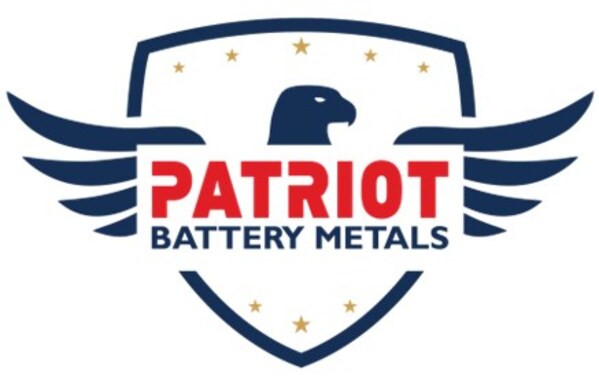
VANCOUVER,BC,Dec. 5,2024 -- December 05,2024 – Sydney,Australia
Highlights
307 g sample of marketable,on-specification,battery-grade lithium hydroxide monohydrate product produced from the CV5 Spodumene Pegmatite.
The CV5 Pegmatite Deposit forms the cornerstone of the Company's Shaakichiuwaanaan Lithium Project in Canada,representing the bulk of the consolidated Mineral Resource Estimate1 of 80.1 Mt at 1.44% Li2O Indicated and 62.5 Mt at 1.31% Li2O Inferred.
No impurities of concern present.
Testwork completed as a successful "proof-of-concept" to demonstrate that a high-quality battery-grade lithium end-product can be produced using representative feed material from CV5.
The test sample was produced from spodumene concentrate grading 6.2 % Li2O and 0.6% Fe2O3,produced from a Dense Media Separation ("DMS") pilot plant using drill core samples representing the expected early mine-life at the CV5 Pegmatite.
This marks a significant de-risking milestone as Patriot advances CV5 through the stages of development.
Sample to be used to further advance and strengthen engagement with potential strategic partners and end-users.
Ken Brinsden,Director,President,and CEO of the Company,comments: "The successful production of a battery-grade lithium hydroxide product from the cornerstone CV5 Spodumene Pegmatite marks a key de-risking step in our development strategy. While we are focused on advancing CV5 to production using a simple DMS-only flowsheet to produce a high-quality spodumene concentrate,it is important to look beyond and from the viewpoint of the end-user of the downstream product."
"Not all spodumene concentrates are created equal and by demonstrating that the high-quality,low-iron spodumene concentrate produced from CV5 results in a marketable and on-spec battery-grade lithium hydroxide product,we are further validating and de-risking the Project as we eventually look to capitalize on this high-value downstream product category." added Mr. Brinsden.
_________________________________
1 Shaakichiuwaanaan (CV5 & CV13) Mineral Resource Estimate (80.1 Mt at 1.44% Li2O and 163 ppm Ta2O5 Indicated,and 62.5Mt at 1.31% Li2O and 147 ppm Ta2O5 ppm Inferred) is reported at a cut-off grade of 0.40% Li2O (open-pit),0.60% Li2O (underground CV5),and 0.80% Li2O (underground CV13) with an Effective Date of August 21,2024 (through drill hole CV24-526). Mineral Resources are not Mineral Reserves as they do not have demonstrated economic viability.
Patriot Battery Metals Inc. (the "Company" or "Patriot") (TSX: PMET) (ASX: PMT) (OTCQX: PMETF) (FSE: R9GA)is pleased to announce that it has successfully produced a marketable and on-specification ("on-spec") battery-grade lithium hydroxide monohydrate sample using spodumene concentrate from the CV5 Pegmatite. The CV5 Pegmatite,wholly-owned by the Company as part of its Shaakichiuwaanaan Property,is located in the Eeyou Istchee James Bay region of Quebec and forms the large majority of a consolidated Mineral Resource Estimate2 of 80.1 Mt at 1.44% Li2O indicated and 62.5 Mt at 1.31% Li2O inferred.
The CV5 Spodumene Pegmatite is accessible year-round by all-season road and is situated approximately 14 km from a major hydro-electric powerline corridor.
The sample (307 g) of marketable,on-specification ("on-spec"), battery-grade lithium hydroxide monohydrate (Figure 1) was produced using spodumene concentrate (6.2% Li2O,0.6% Fe2O3) from the CV5 Spodumene Pegmatite. The conversion testwork was performed using a bench-scale equivalent of a typical downstream commercial process flowsheet and completed at SGS Canada's Lakefield,ON,facility.
The objective of the test program was to demonstrate a "proof-of-concept" for the entire flowsheet using representative spodumene concentrate produced from whole rock pegmatite (CV5). The program was highly successful and converted the spodumene concentrate to a lithium hydroxide monohydrate product at battery-grade specifications. The result of this program also affirms prior testwork undertaken by other independent parties.
_________________________________
2 Shaakichiuwaanaan (CV5 & CV13) Mineral Resource Estimate (80.1 Mt at 1.44% Li2O and 163 ppm Ta2O5 Indicated,2024 (through drill hole CV24-526). Mineral Resources are not Mineral Reserves as they do not have demonstrated economic viability.
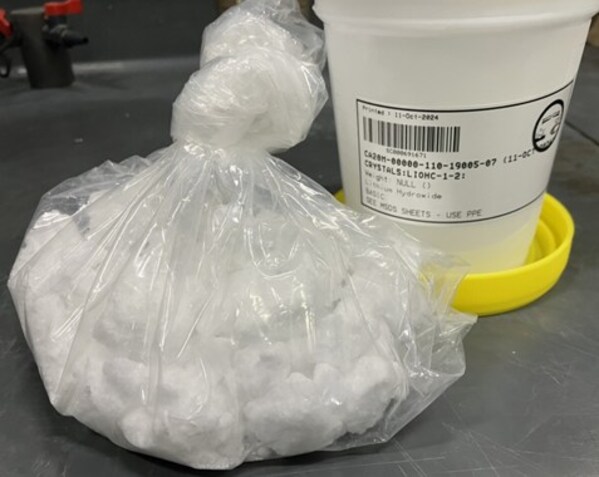
Figure 1: Marketable,on spec,battery-grade lithium hydroxide monohydrate produced from the CV5 Spodumene Pegmatite. (CNW Group/Patriot Battery Metals Inc.)
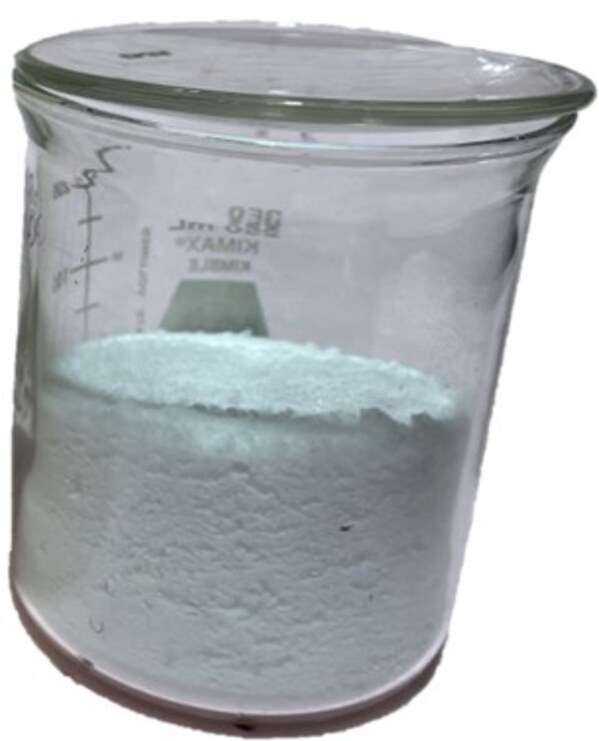
Figure 1: Marketable,battery-grade lithium hydroxide monohydrate produced from the CV5 Spodumene Pegmatite. (CNW Group/Patriot Battery Metals Inc.)
The spodumene concentrate was produced using a simple DMS-only (+ magnetic separation) flowsheet which was fed by a master-composite of drill core material,representing anticipated early mine-life (Figure 2). This master composite included 15% non-pegmatite host-rock dilution to better represent a conservative (in terms of dilution content) commercial mining operation scenario.
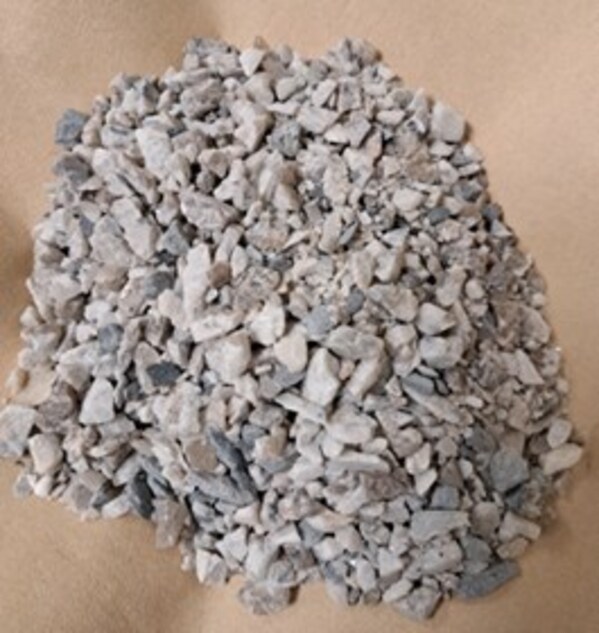
Figure 2: Crushed whole rock pegmatite with 15% non-pegmatite host rock dilution – 1.05% Li2O (left); DMS spodumene concentrate feed for the downstream test work – 6.2% Li2O and 0.60% Fe2O3 (right). (CNW Group/Patriot Battery Metals Inc.)
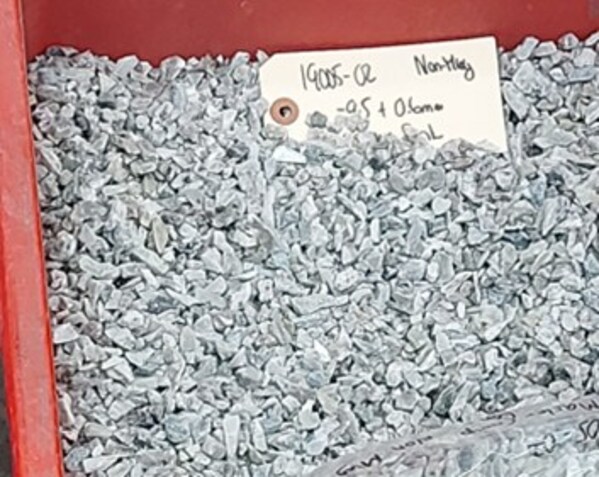
Figure 2: Crushed whole rock pegmatite with 15% non-pegmatite host rock dilution – 1.05% Li2O (left); DMS spodumene concentrate feed for the downstream test work – 6.2% Li2O and 0.60% Fe2O3 (right). (CNW Group/Patriot Battery Metals Inc.)
The DMS spodumene concentrate (Figure 2) was subjected to a typical calcination step,converting the spodumene mineral from its natural and non-leachable α-spodumene structure into its leachable β-spodumene structure.The calcine (solid) was then ground to 100% passing minus 300 µm and subjected to a sulphuric acid roast.The roasted material was then water-leached,placing the lithium into solution as lithium sulphate. The solution then underwent primary impurity removal where,principally,iron and aluminum were removed by selective precipitation with hydrated lime.Air sparging was used to oxidize the iron from the ferrous to ferric state in the lithium sulphate solution.
The lithium sulphate solution was then subjected to secondary impurity removal stage which precipitated most of the calcium and magnesium by selective precipitation with sodium hydroxide and sodium carbonate.The remaining calcium and trace magnesium in the lithium sulphate solution were removed by ion exchange using Lanxess MDS TP208 resin (Figure 3 and Figure 4).
The purified lithium sulphate solution was first concentrated by evaporation (this step would be removed in a commercial plant as water-leach parameters are optimized). The lithium sulphate in solution was transformed into lithium hydroxide by the addition of sodium hydroxide (causticization step). The sodium sulphate ions in solution were then removed by a traditional crystallization of sodium sulphate as Glauber's salt.
Finally,lithium hydroxide monohydrate was produced by a 2-step crystallization process,with a final quality that exceeded battery grade specifications (i.e. LiOH•H2O >99.9%) with no notable impurities of concern present (Figure 1).
Additionally,the purity of the lithium solution from the earlier process step is a strong indication that an on-spec,battery-grade lithium carbonate product may also be directly produced from CV5 as an additional product option. Collectively,the result of the test program highlights the benefits to downstream processing when using a clean and low-iron spodumene concentrate such as that produced from the CV5 Spodumene Pegmatite.
The representative lithium hydroxide sample produced from the CV5 Pegmatite will be used to further advance and strengthen the Company's engagement with potential strategic partners,end-users,and OEMs (Original Equipment Manufacturers). The ability to demonstrate with definitive data that high-quality,low-iron spodumene concentrates from CV5 are amenable to standard downstream processing methods resulting in on-spec battery-grade lithium hydroxide monohydrate,is significant.
The production of this sample marks a key milestone for the Company and represents a significant de-risking of the Project.
The Company has recently completed a significant core sampling program to provide additional representative material for the next phase of mineral processing testwork in support of the ongoing Feasibility Study on the CV5 Spodumene Pegmatite. This program will provide significant quantities of representative spodumene concentrate for any future downstream test programs.
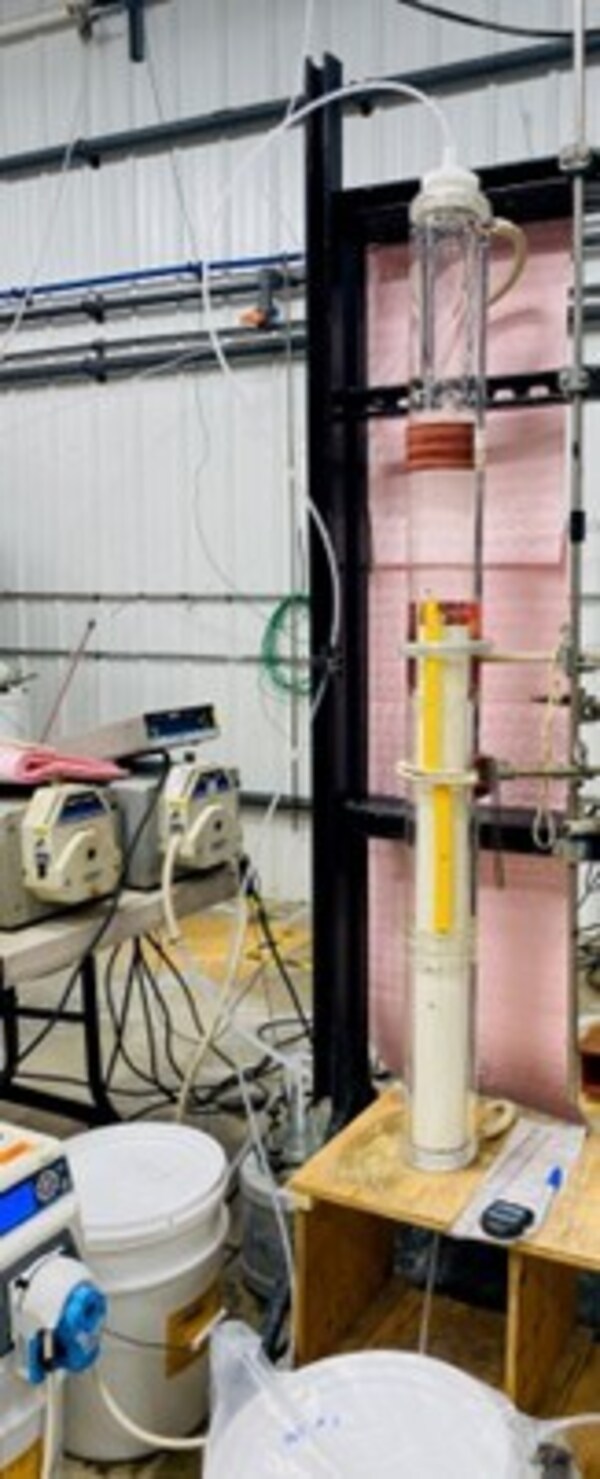
Figure 3: Water-leach and ion exchange impurity removal stages of the lithium hydroxide flowsheet. (CNW Group/Patriot Battery Metals Inc.)
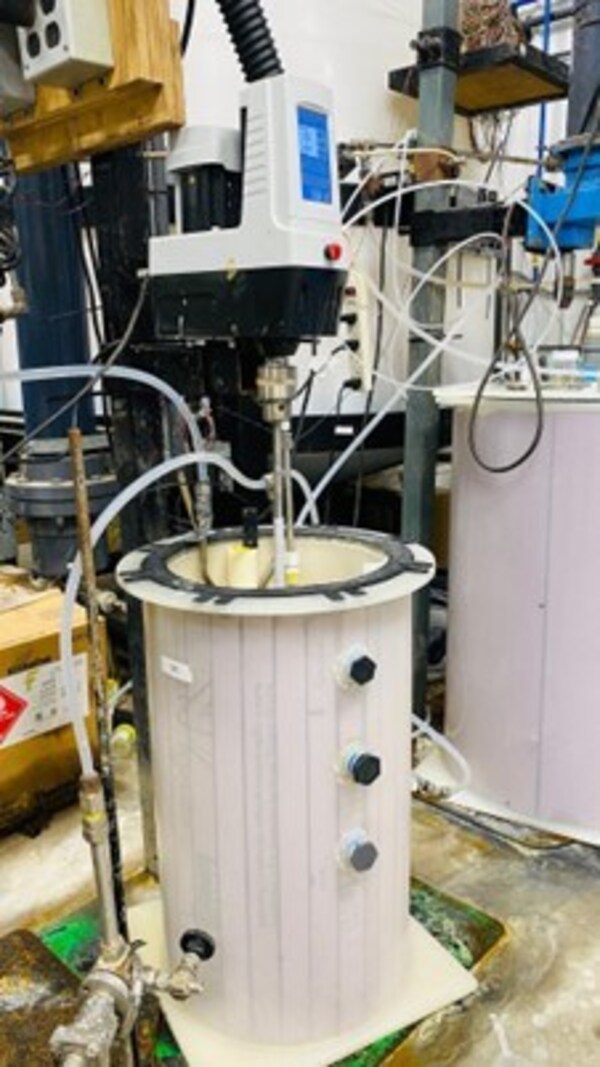
Figure 3: Water-leach and ion exchange impurity removal stages of the lithium hydroxide flowsheet. (CNW Group/Patriot Battery Metals Inc.)
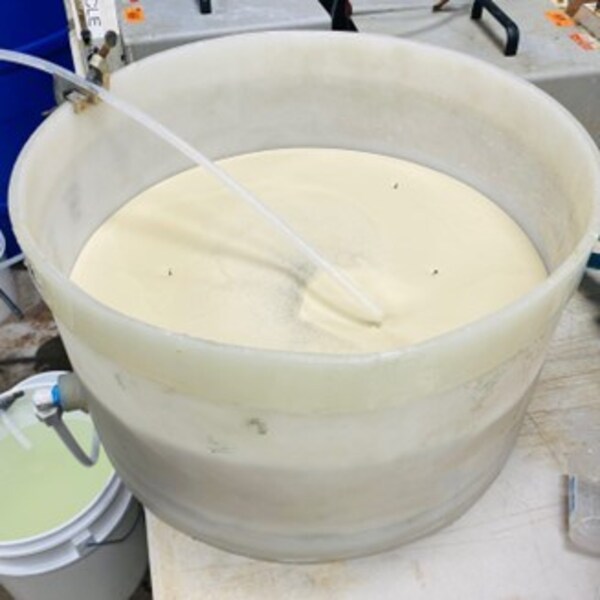
Figure 4: Filtering stage and resultant filter cake post water-leaching and impurity removal. (CNW Group/Patriot Battery Metals Inc.)
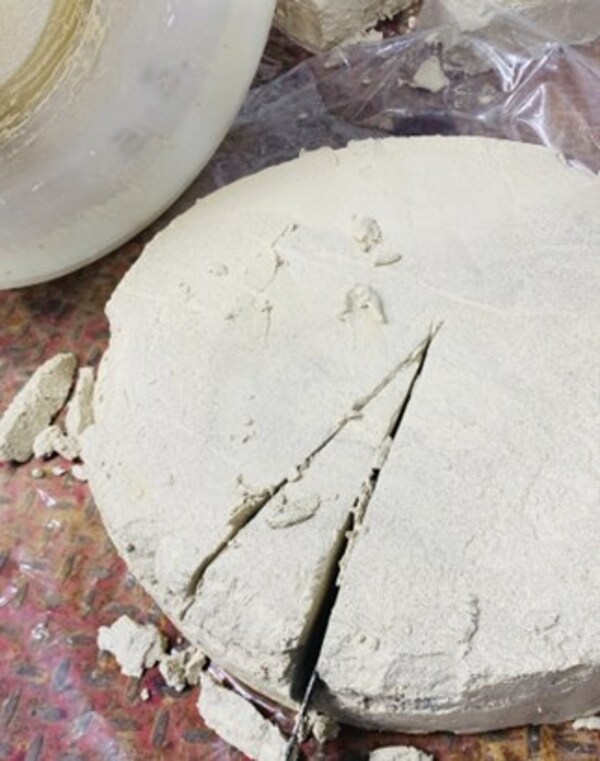
Figure 4: Filtering stage and resultant filter cake post water-leaching and impurity removal. (CNW Group/Patriot Battery Metals Inc.)
Qualified/Competent Person
The information in this news release that relates to exploration results for the Shaakichiuwaanaan Property is based on,and fairly represents,information compiled by Mr. Darren L. Smith,M.Sc.,P.Geo.,who is a Qualified Person as defined by National Instrument 43-101 – Standards of Disclosure for Mineral Projects,and member in good standing with the Ordre des Géologues du Québec (Geologist Permit number 01968),and with the Association of Professional Engineers and Geoscientists of Alberta (member number 87868). Mr.Smith has reviewed and approved the technical information in this news release.
Mr. Smith is an Executive and Vice President of Exploration for Patriot Battery Metals Inc. and holds common shares and options in the Company.
Mr. Smith has sufficient experience,which is relevant to the style of mineralization,type of deposit under consideration,and to the activities being undertaken to qualify as a Competent Person as described by the Australasian Code for Reporting of Exploration Results,Mineral Resources and Ore Reserves (the JORC Code). Mr. Smith consents to the inclusion in this news release of the matters based on his information in the form and context in which it appears.
About Patriot Battery Metals Inc.
Patriot Battery Metals Inc. is a hard-rock lithium exploration company focused on advancing its district-scale 100%-owned Shaakichiuwaanaan Property (formerly known as Corvette) located in the Eeyou Istchee James Bay region of Quebec,Canada,which is accessible year-round by all-season road and is proximal to regional powerline infrastructure. The Shaakichiuwaanaan Mineral Resource3,which includes the CV5 & CV13spodumene pegmatites,totals 80.1Mt at 1.44% Li2O Indicated,and 62.5Mt at 1.31% Li2O Inferred,and ranks as the largest lithium pegmatite resource in the Americas,and the 8th largest lithium pegmatite resource in the world.
A Preliminary Economic Assessment ("PEA") was announced for the CV5 Pegmatite August 21,2024,and highlights it as a potential North American Lithium Raw Materials Powerhouse. The PEA outlines the potential for a competitive and globally significant high-grade lithium project targeting up to ~800 ktpa spodumene concentrate using a simple Dense Media Separation ("DMS) only process flowsheet.
For further information,please contact us at [email protected] or by calling +1 (604) 279-8709,or visit www.patriotbatterymetals.com. Please also refer to the Company's continuous disclosure filings,available under its profile at www.sedarplus.ca and www.asx.com.au,for available exploration data.
This news release has been approved by the Board of Directors.
"KEN BRINSDEN"
Kenneth Brinsden,CEO,& Managing Director
_________________________________
3 Shaakichiuwaanaan (CV5 & CV13) Mineral Resource Estimate (80.1 Mt at 1.44% Li2O and 163 ppm Ta2O5 Indicated,and 62.5 Mt at 1.31% Li2O and 147 ppm Ta2O5 ppm Inferred) is reported at a cut-off grade of 0.40% Li2O (open-pit),2024 (through drill hole CV24-526). Mineral Resources are not Mineral Reserves as they do not have demonstrated economic viability.
Disclaimer for Forward-looking Information
This news release contains "forward-looking information" or "forward-looking statements" within the meaning of applicable securities laws and other statements that are not historical facts. Forward-looking statements are included to provide information about management's current expectations and plans that allows investors and others to have a better understanding of the Company's business plans and financial performance and condition.
All statements,other than statements of historical fact included in this news release,regarding the Company's strategy,future operations,technical assessments,prospects,plans and objectives of management are forward-looking statements that involve risks and uncertainties. Forward-looking statements are typically identified by words such as "plan","expect","estimate","intend","anticipate","believe",or variations of such words and phrases or statements that certain actions,events or results "may","could","would","might" or "will" be taken,occur or be achieved. Forward-looking statements in this release include,but are not limited to,statements concerning: potential strategic partners and end-users,the de-risking of the Project,and the potential for marketable and on-spec battery-grade lithium hydroxide product.
Forward-looking information is based upon certain assumptions and other important factors that,if untrue,could cause the actual results,performance or achievements of the Company to be materially different from future results,performance or achievements expressed or implied by such information or statements. There can be no assurance that such information or statements will prove to be accurate. Key assumptions upon which the Company's forward-looking information is based include,without limitation,that proposed exploration and mineral resource estimate work on the Property will continue as expected,the accuracy of reserve and resource estimates,the classification of resources between inferred and the assumptions on which the reserve and resource estimates are based,long-term demand for spodumene supply,and that exploration and development results continue to support management's current plans for Property development and expectations for the Project.
Readers are cautioned that the foregoing list is not exhaustive of all factors and assumptions which may have been used. Forward-looking statements are also subject to risks and uncertainties facing the Company's business,any of which could have a material adverse effect on the Company's business,financial condition,results of operations and growth prospects. Some of the risks the Company faces and the uncertainties that could cause actual results to differ materially from those expressed in the forward-looking statements include,among others,the ability to execute on plans relating to the Company's Project,including the timing thereof. In addition,readers are directed to carefully review the detailed risk discussion in the Company's most recent Annual Information Form filed on SEDAR+,which discussion is incorporated by reference in this news release,for a fuller understanding of the risks and uncertainties that affect the Company's business and operations.
Although the Company believes its expectations are based upon reasonable assumptions and has attempted to identify important factors that could cause actual actions,events or results to differ materially from those described in forward-looking statements,there may be other factors that cause actions,events or results not to be as anticipated,estimated or intended. There can be no assurance that forward-looking information will prove to be accurate,as actual results and future events could differ materially from those anticipated in such information. As such,these risks are not exhaustive; however,they should be considered carefully. If any of these risks or uncertainties materialize,actual results may vary materially from those anticipated in the forward-looking statements found herein. Due to the risks,uncertainties and assumptions inherent in forward-looking statements,readers should not place undue reliance on forward-looking statements.
Forward-looking statements contained herein are presented for the purpose of assisting investors in understanding the Company's business plans,financial performance and condition and may not be appropriate for other purposes.
The forward-looking statements contained herein are made only as of the date hereof. The Company disclaims any intention or obligation to update or revise any forward-looking statements,whether as a result of new information,future events or otherwise,except to the extent required by applicable law. The Company qualifies all of its forward-looking statements by these cautionary statements.
Competent Person Statement (ASX Listing Rule 5.23)
The mineral resource estimate in this release was reported by the Company in accordance with ASX Listing Rule 5.8 on August 5,2024. The Company confirms that,as of the date of this announcement,it is not aware of any new information or data verified by the competent person that materially affects the information included in the announcement and that all material assumptions and technical parameters underpinning the estimates in the announcement continue to apply and have not materially changed. The Company confirms that,as at the date of this announcement,the form and context in which the competent person's findings are presented have not been materially modified from the original market announcement.
The production target referred to in this release was reported by the Company in accordance with ASX Listing Rule 5.16 on August 21,all material assumptions and technical parameters underpinning the production target in the original announcement continue to apply and have not materially changed.
Appendix 1 – JORC Code 2012 Table 1 (ASX Listing Rule 5.7.1)
Section 1 – Sampling Techniques and Data
Criteria
JORC Code explanation
Commentary
Sampling techniques
Nature and quality of sampling (eg cut channels,random chips,or specific specialized industry standard measurement tools appropriate to the minerals under investigation,such as down hole gamma sondes,or handheld XRF instruments,etc). These examples should not be taken as limiting the broad meaning of sampling.
Include reference to measures taken to ensure sample representivity and the appropriate calibration of any measurement tools or systems used.
Aspects of the determination of mineralization that are Material to the Public Report.
In cases where 'industry standard' work has been done this would be relatively simple (eg 'reverse circulation drilling was used to obtain 1 m samples from which 3 kg was pulverized to produce a 30 g charge for fire assay'). In other cases more explanation may be required,such as where there is coarse gold that has inherent sampling problems. Unusual commodities or mineralization types (eg submarine nodules) may warrant disclosure of detailed information.
Core sampling protocols meet industry standard practices.
Core sampling is guided by lithology as determined during geological logging (i.e.,by a geologist). All pegmatite intervals are sampled in their entirety (half-core),regardless if spodumene mineralization is noted or not (in order to ensure an unbiased sampling approach) in addition to ~1 to 3 m of sampling into the adjacent host rock (dependent on pegmatite interval length) to "bookend" the sampled pegmatite.
The minimum individual sample length is typically 0.5 m and the maximum sample length is typically 2.0 m. Targeted individual pegmatite sample lengths are 1.0 to 1.5 m.
All drill core is oriented to maximum foliation prior to logging and sampling and is cut with a core saw into half-core pieces,with one half-core collected for assay,and the other half-core remaining in the box for reference. The half remaining in the box was collected for the metallurgical test program.
The half-core samples collected from drill holes were shipped to SGS Canada's laboratory in Lakefield,for mineral processing and downstream testwork through to battery-grade lithium hydroxide.
Drilling techniques
Drill type (eg core,reverse circulation,open-hole hammer,rotary air blast,auger,Bangka,sonic,etc) and details (eg core diameter,triple or standard tube,depth of diamond tails,face-sampling bit or other type,whether core is oriented and if so,by what method,etc).
All holes areNQ.
Drill sample recovery
Method of recording and assessing core and chip sample recoveries and results assessed.
Measures taken to maximize sample recovery and ensure representative nature of the samples.
Whether a relationship exists between sample recovery and grade and whether sample bias may have occurred due to preferential loss/gain of fine/coarse material.
All drill core wasgeotechnically logged following industry standard practices,and include TCR,RQD,ISRM,and Q-Method. Core recovery is very good and typically exceeds 90%.
Logging
Whether core and chip samples have been geologically and geotechnically logged to a level of detail to support appropriate Mineral Resource estimation,mining studies and metallurgical studies.
Whether logging is qualitative or quantitative in nature. Core (or costean,channel,etc) photography.
The total length and percentage of the relevant intersections logged.
Upon receipt at the core shack,all drill core is pieced together,oriented to maximum foliation,metre marked,geotechnically logged (including structure),alteration logged,geologically logged,and sample logged on an individual sample basis. Core box photos are also collected of all core drilled,regardless of perceived mineralization. Specific gravity measurements of pegmatite are also collected at systematic intervals for all pegmatite drill core using the water immersion method,as well as select host rock drill core.
The logging is qualitative by nature,and includes estimates of spodumene grain size,inclusions,and model mineral estimates.
These logging practices meet or exceed current industry standard practices.
Sub-sampling techniques and sample preparation
If core,whether cut or sawn and whether quarter,half or all core taken.
If non-core,whether riffled,tube sampled,rotary split,etc and whether sampled wet or dry.
For all sample types,the nature,quality and appropriateness of the sample preparation technique.
Quality control procedures adopted for all sub-sampling stages to maximize representivity of samples.
Measures taken to ensure that the sampling is representative of the in situ material collected,including for instance results for field duplicate/second-half sampling.
Whether sample sizes are appropriate to the grain size of the material being sampled.
Drill core sampling follows industry best practices. Drill core was saw-cut with half-core sent for geochemical analysis and half-core remaining in the box for reference. The same side of the core was sampled to maintain representativeness. The core that remained in the box post geochem sampling was the core collected for the metallurgical test programs,including that described herein.
Sample sizes are appropriate for the material being assayed.
All protocols employed are considered appropriate for the sample type and nature of mineralization and are considered the optimal approach for maintaining representativeness in sampling.
Quality of assay data and laboratory tests
The nature,quality and appropriateness of the assaying and laboratory procedures used and whether the technique is considered partial or total.
For geophysical tools,spectrometers,handheld XRF instruments,etc,the parameters used in determining the analysis including instrument make and model,reading times,calibrations factors applied and their derivation,etc.
Nature of quality control procedures adopted (eg standards,blanks,duplicates,external laboratory checks) and whether acceptable levels of accuracy (ie lack of bias) and precision have been established.
The Company has relied upon SGS internal lab assays for the dataset discussed herein. SGS is an independent laboratory body with industry standard accreditations.
All protocols employed are considered appropriate for the sample type and nature of mineralization and are considered the optimal approach for maintaining representativeness in sampling.
Verification of sampling and assaying
The verification of significant intersections by either independent or alternative company personnel.
The use of twinned holes.
Documentation of primary data,data entry procedures,data verification,data storage (physical and electronic) protocols.
Discuss any adjustment to assay data.
Data capture utilizes MX Deposit software whereby core logging data is entered directly into the software for storage,including direct import of laboratory analytical certificates as they are received. The Company employs various on-site and post QAQC protocols to ensure data integrity and accuracy.
Adjustments to data include reporting lithium in its oxide form,as it is reported in elemental form in the assay certificates. Formulas used are Li2O = Li x 2.153.
Location of data points
Accuracy and quality of surveys used to locate drill holes (collar and down-hole surveys),trenches,mine workings and other locations used in Mineral Resource estimation.
Specification of the grid system used.
Quality and adequacy of topographic control.
Drill holes have been previously reported.
Data spacing and distribution
Data spacing for reporting of Exploration Results.
Whether the data spacing and distribution is sufficient to establish the degree of geological and grade continuity appropriate for the Mineral Resource and Ore Reserve estimation procedure(s) and classifications applied.
Whether sample compositing has been applied.
At CV5,drill hole collar spacing is dominantly grid based. Several collars are typically completed from the same pad at varied orientations targeting pegmatite pierce points of ~50 to 100 m spacing.
Drill spacing is sufficient to support a mineral resource estimate.
Core sample lengths typically range from 0.5 to 2.0 m and average ~1.0 to 1.5 m. Sampling is continuous within all pegmatite encountered in the drill hole.
Orientation of data in relation to geological structure
Whether the orientation of sampling achieves unbiased sampling of possible structures and the extent to which this is known,considering the deposit type.
If the relationship between the drilling orientation and the orientation of key mineralized structures is considered to have introduced a sampling bias,this should be assessed and reported if material.
No sampling bias is anticipated based on structure within the mineralized body.
The principal mineralized bodies are relatively undeformed and very competent,although have some meaningful structural control.
At CV5,the principal mineralized body and adjacent lenses are steeply dipping resulting in oblique angles of intersection with true widths varying based on drill hole angle and orientation of pegmatite at that particular intersection point. i.e.,the dip of the mineralized pegmatite body has variations in a vertical sense and along strike,so the true widths are not always apparent until several holes have been drilled (at the appropriate spacing) in any particular drill-fence.
Sample security
The measures taken to ensure sample security.
Samples were collected by Company staff or its consultants following specific protocols governing sample collection,handling,and transport to the lab.
Audits or reviews
The results of any audits or reviews of sampling techniques and data.
A review of the sample procedures through the Company's 2024 winter drill program (through CV24-526) was completed by an independent Competent Person with respect to the Shaakichiuwaanaan's Mineral Resource Estimate (CV5 & CV13 pegmatites) and deemed adequate and acceptable to industry best practices (discussed in a technical report titled "NI 43‑101 Technical Report,Preliminary Economic Assessment for the Shaakichiuwaanaan Project,James Bay Region,Quebec,Canada" by Todd McCracken,Hugo Latulippe,P.Eng.,Shane Ghouralal,MBA,and Luciano Piciacchia,Ph.D.,of BBA Engineering Ltd.,Ryan Cunningham,M.Eng.,of Primero Group Americas Inc.,and Nathalie Fortin,M.Env.,of WSP Canada Inc.,Effective Date of August 21,and Issue Date of September 12,2024.
Additionally,the Company continually reviews and evaluates its procedures in order to optimize and ensure compliance at all levels of sample data collection and handling.
Section 2 – Reporting of Exploration Results
Criteria
JORC Code explanation
Commentary
Mineral tenement and land tenure status
Type,reference name/number,location and ownership including agreements or material issues with third parties such as joint ventures,partnerships,overriding royalties,native title interests,historical sites,wilderness or national park and environmental settings.
The security of the tenure held at the time of reporting along with any known impediments to obtaining a licence to operate in the area.
The Corvette Property is comprised of 463 CDC claims located in the James Bay Region of Quebec,with Lithium Innova Inc. (wholly owned subsidiary of Patriot Battery Metals Inc.) being the registered title holder for all of the claims. The northern border of the Property's primary claim block is located within approximately 6 km to the south of the Trans-Taiga Road and powerline infrastructure corridor.
The CV5 Spodumene Pegmatite is accessible year-round by all-season road is situated approximately 13.5 km south of the regional and all‑weather Trans-Taiga Road and powerline infrastructure.
The Company holds 100% interest in the Property subject to various royalty obligations depending on original acquisition agreements. DG Resources Management holds a 2% NSR (no buyback) on 76 claims,D.B.A. Canadian Mining House holds a 2% NSR on 50 claims (half buyback for $2M),Osisko Gold Royalties holds a sliding scale NSR of 1.5-3.5% on precious metals,and 2% on all other products,over 111 claims,and Azimut Exploration holds 2% on NSR on 39 claims.
The Property does not overlap any atypically sensitive environmental areas or parks,or historical sites to the knowledge of the Company. There are no known hinderances to operating at the Property,apart from the goose harvesting season (typically mid-April to mid-May) where the communities request helicopter flying not be completed,and potentially wildfires depending on the season,scale,and location.
Claim expiry dates range from February 2025 to November 2026.
Exploration done by other parties
Acknowledgment and appraisal of exploration by other parties.
No core assay results from other parties are disclosed herein.
The most recent independent Property review was a technical report titled "NI 43‑101 Technical Report,2024.
Geology
Deposit type,geological setting and style ofmineralization.
The Property overlies a large portion of the Lac Guyer Greenstone Belt,considered part of the larger La Grande River Greenstone Belt and is dominated by volcanic rocks metamorphosed to amphibolite facies. The claim block is dominantly host to rocks of the Guyer Group (amphibolite,iron formation,intermediate to mafic volcanics,peridotite,pyroxenite,komatiite,as well as felsic volcanics). The amphibolite rocks that trend east-west (generally steeply south dipping) through this region are bordered to the north by the Magin Formation (conglomerate and wacke) and to the south by an assemblage of tonalite,granodiorite,and diorite,in addition to metasediments of the Marbot Group (conglomerate,wacke). Several regional-scale Proterozoic gabbroic dykes also cut through portions of the Property (Lac Spirt Dykes,Senneterre Dykes).
The geological setting is prospective for gold,silver,base metals,platinum group elements,and lithium over several different deposit styles including orogenic gold (Au),volcanogenic massive sulfide (Cu,Au,Ag),komatiite-ultramafic (Au,Ag,PGE,Ni,Cu,Co),and pegmatite (Li,Ta).
Exploration of the Property has outlined three primary mineral exploration trends crossing dominantly east-west over large portions of the Property – Golden Trend (gold),Maven Trend (copper,gold,silver),andCV Trend (lithium,tantalum). The CV5 and CV13 spodumene pegmatites are situated within the CV Trend. Lithium mineralization at the Property,including at CV5,CV13,and CV9,is observed to occur within quartz-feldspar pegmatite,which may be exposed at surface as high relief 'whale-back' landforms. The pegmatite is often very coarse-grained and off-white in appearance,with darker sections commonly composed of mica and smoky quartz,and occasional tourmaline.
The lithiumpegmatites at Corvette are categorized as LCT Pegmatites. Core assays and ongoing mineralogical studies,coupled with field mineral identification and assays,indicate spodumene as the dominant lithium-bearing mineral on the Property,with no significant petalite,lepidolite,lithium-phosphate minerals,or apatite present. The spodumene crystal size of the pegmatites is typically decimetre scale,and therefore,very large. The pegmatites also carry significant tantalum values with tantalite indicated to be the mineral phase.
Drill hole Information
A summary of all information material to the understanding of the exploration results including a tabulation of the following information for all Material drill holes:
easting and northing of the drill hole collar
elevation orRL (Reduced Level – elevation above sea level in metres) of the drill hole collar
dip and azimuth of the hole
down hole length and interception depth
hole length.
If the exclusion of this information is justified on the basis that the information is not Material and this exclusion does not detract from the understanding of the report,the Competent Person should clearly explain why this is the case.
Drill hole information has been previously disclosed.
Data aggregation methods
In reporting Exploration Results,weighting averaging techniques,maximum and/or minimum grade truncations (eg cutting of high grades) and cut-off grades are usually Material and should be stated.
Where aggregate intercepts incorporate short lengths of high grade results and longer lengths of low grade results,the procedure used for such aggregation should be stated and some typical examples of such aggregations should be shown in detail.
The assumptions used for any reporting of metal equivalent values should be clearly stated.
N/A – no assay results reported in this release.
Relationship between mineralization widths and intercept lengths
These relationships are particularly important in the reporting of Exploration Results.
If the geometry of the mineralization with respect to the drill hole angle is known,its nature should be reported.
If it is not known and only the down hole lengths are reported,there should be a clear statement to this effect (eg 'down hole length,true width not known').
At CV5,geological modelling is ongoing on a hole-by-hole basis and as assays are received. However,current interpretation supports a principal,large pegmatite body of near vertical to steeply dipping orientation,flanked by several subordinate pegmatite lenses (collectively,the 'CV5Spodumene Pegmatite')
Diagrams
Appropriate maps and sections (with scales) and tabulations of intercepts should be included for any significant discovery being reported These should include,but not be limited to a plan view of drill hole collar locations and appropriate sectional views.
N/A – no assay results reported in this release.
Balanced reporting
Where comprehensive reporting of all Exploration Results is not practicable,representative reporting of both low and high grades and/or widths should be practiced to avoid misleading reporting of Exploration Results.
N/A – no assay results reported in this release.
Other substantive exploration data
Other exploration data,if meaningful and material,should be reported including (but not limited to): geological observations; geophysical survey results; geochemical survey results; bulk samples – size and method of treatment; metallurgical test results; bulk density,groundwater,geotechnical and rock characteristics; potential deleterious or contaminating substances.
The Company has completed significant metallurgical testing comprised of HLS and magnetic testing,which has produced 6+% Li2O spodumene concentrates at >70% recovery on both CV5 and CV13 pegmatite material,indicating DMS as a viable primary process approach,and that both CV5 and CV13 could potentially feed the same process plant. A DMS test on CV5 Spodumene Pegmatite material returned a spodumene concentrate grading 5.8% Li2O at 79% recovery,strongly indicating potential for a DMS only operation to be applicable. Additionally,a more expansive DMS pilot program has been completed,including with non-pegmatite host-rock dilution,and has produced results in line with prior testwork.
Sample (307g) of marketable,on-specification ("on-spec"),battery-grade lithium hydroxide monohydrate was produced using spodumene concentrate (6.2% Li2O,0.6% Fe2O3) from the CV5 Spodumene Pegmatite. The conversion testwork was performed using a bench-scale equivalent of a typical downstream commercial process flowsheet and completed at SGS Canada's Lakefield,facility. The objective of the test program was to demonstrate a "proof-of-concept" for the entire flowsheet using representative spodumene concentrate produced from whole rock pegmatite (CV5). The spodumene concentrate was produced using a simple DMS-only (+ magnetic separation) flowsheet which was fed by a master-composite of drill core material,representing anticipated early mine-life. Further details are contained in news release dated December 4,2024.
Various mandates required for advancing the Project towards economic studies have been initiated,including but not limited to,environmental baseline,metallurgy,geomechanics,hydrogeology,hydrology,stakeholder engagement,geochemical characterization,as well as transportation and logistical studies.
Further work
The nature and scale of planned further work (eg tests for lateral extensions or depth extensions or large-scale step-out drilling).
Diagrams clearly highlighting the areas of possible extensions,including the main geological interpretations and future drilling areas,provided this information is not commercially sensitive.
The Company intends to continue its metallurgical programs at CV5 as the Project advances through Feasibility.
Olivier Caza-Lapointe,Head,Investor Relations – North America,T: +1 (514) 913-5264,E: [email protected]
Photo - /up/2024/1205/24120520020807887620.jpg
Photo - /up/2024/1205/24120520020978806594.jpg
Photo - /up/2024/1205/24120520021150914716.jpg
Photo - /up/2024/1205/24120520021323690709.jpg
Photo - /up/2024/1205/24120520021540659875.jpg
Photo - /up/2024/1205/24120520021745339566.jpg
Photo - /up/2024/1205/24120520021951099746.jpg
Photo - /up/2024/1205/24120520022120098427.jpg
Logo - /up/2024/1205/24120520020669663134.jpg

Patriot Battery Metals Inc. Logo (CNW Group/Patriot Battery Metals Inc.)
© OfficialAffairs